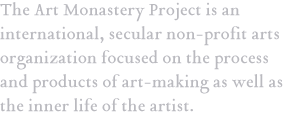Shambhala Acharya Judith Simmer-Brown on Monasticism
Shambhala Acharya Judith Simmer-Brown, in Buddhist Geeks, Episode 146 “Investing in the Future of American Buddhism”:
Vince: So before we close, maybe if I could ask a little bit about monasticism, where you see it heading. This is something you said you wanted to come back to.
Judith: I think the returns are not in on monasticism. I personally think that monasticism does need to be established in this country. It may never play the role it did in Asia, where it was the major force in all the Buddhist traditions, but there is some precious gem that monasticism has always been for Buddhism. And I think that having authentic monasteries in our traditions is really, really important in the West. So that there’s some kind of a repository of a certain lineage of practice and study and mentorship that we otherwise could lose. So even though there are many who pooh-pooh monasticism in American Buddhism, I wanted to put a plug in there. Because I think it’s really much too precious to just shelve and say, “It’s not American.” That’s subject for more conversation perhaps at another time.
Vince: No, actually I think we should maybe go into that a little more.
Judith: Okay.
Vince: I think it would be interesting and it’s really relevant, especially because when we look around, or I look around, I don’t really see many monastic communities that are working, that are convert Buddhists, that are Western Buddhists. I know of one Theravada group in California. Ajahn Amaro.
Judith: Ajahn Amaro
Vince: But very few.
Judith: Yes. There are very few and there may always be very few. But my experience of monasteries first began at Tassajara when I was a Zen student. And it’s a real monastery. It’s a Zen monastery. And it’s an amazing place. And I learned something in my bones about practice being at Tassajara, learning how to cook in the kitchen, learning how to slice mushrooms, learning how to lead a monastic day getting up at four in the morning for zazen and then, during sesshin doing long days. And the whole cradle of monastic training at Tassajara is just absolutely amazing.
And then in my time as a Tibetan Buddhist I’ve spent a lot of time at Gampo Abbey in northern Nova Scotia. Pema Chodron is the abbess of Gampo Abbey. And it’s an amazing community. Again, very remote, very deep practice. Practice in one’s bones, so that the routines and practices of the day are so potent and the study part is so rich as well.
I also have had a number of monastic students at Naropa, and its been very difficult for them being solitary monastics in the US. But at Naropa they’ve been able to find something that is at least a little bit like monastic community. My feeling is that the monastic vocation is not something that many people will hold. But there are those for whom it is deep in who they are. Pema Chodron’s a very close friend. She has monasticism deeply embodied in her. And her life as a monastic has produced such incredible benefit for many, many people. She would not be beloved the way she is if she were not monastic. It’s just very clear. There’s been a kind of purification of her, over the decades that I’ve known her, that comes from her monastic discipline and training. So that didn’t come from nowhere. That came from exertion and blessing and commitment and practice and study.
So I think we need to make a place and endow monasteries to continue. And there will be different kinds. You know, it took Thubten Chodron’s monasteries, the strictest in the Tibetan tradition here; she follows the most strict version of the vows. Gampo Abbey has a slightly altered thing. There may be different kinds of monasteries. Zen monasteries are very different from Theravada or Tibetan ones. But I think we need to have those places in our culture, as part of the mosaic, what makes up American Buddhism. And I don’t think they are the same as our practice centers where we go for a short-term retreat–like a month or three months. And those are short term compared to the monastic life that goes on for years.
Shambhala Acharya Judith Simmer-Brown, in Buddhist Geeks, Episode 146 “Investing in the Future of American Buddhism”:
Vince: So before we close, maybe if I could ask a little bit about monasticism, where you see it heading. This is something you said you wanted to come back to.
Judith: I think the returns are not in on monasticism. I personally think that monasticism does need to be established in this country. It may never play the role it did in Asia, where it was the major force in all the Buddhist traditions, but there is some precious gem that monasticism has always been for Buddhism. And I think that having authentic monasteries in our traditions is really, really important in the West. So that there’s some kind of a repository of a certain lineage of practice and study and mentorship that we otherwise could lose. So even though there are many who pooh-pooh monasticism in American Buddhism, I wanted to put a plug in there. Because I think it’s really much too precious to just shelve and say, “It’s not American.” That’s subject for more conversation perhaps at another time.
Vince: No, actually I think we should maybe go into that a little more.
Judith: Okay.
Vince: I think it would be interesting and it’s really relevant, especially because when we look around, or I look around, I don’t really see many monastic communities that are working, that are convert Buddhists, that are Western Buddhists. I know of one Theravada group in California. Ajahn Amaro.
Judith: Ajahn Amaro
Vince: But very few.
Judith: Yes. There are very few and there may always be very few. But my experience of monasteries first began at Tassajara when I was a Zen student. And it’s a real monastery. It’s a Zen monastery. And it’s an amazing place. And I learned something in my bones about practice being at Tassajara, learning how to cook in the kitchen, learning how to slice mushrooms, learning how to lead a monastic day getting up at four in the morning for zazen and then, during sesshin doing long days. And the whole cradle of monastic training at Tassajara is just absolutely amazing.
And then in my time as a Tibetan Buddhist I’ve spent a lot of time at Gampo Abbey in northern Nova Scotia. Pema Chodron is the abbess of Gampo Abbey. And it’s an amazing community. Again, very remote, very deep practice. Practice in one’s bones, so that the routines and practices of the day are so potent and the study part is so rich as well.
I also have had a number of monastic students at Naropa, and its been very difficult for them being solitary monastics in the US. But at Naropa they’ve been able to find something that is at least a little bit like monastic community. My feeling is that the monastic vocation is not something that many people will hold. But there are those for whom it is deep in who they are. Pema Chodron’s a very close friend. She has monasticism deeply embodied in her. And her life as a monastic has produced such incredible benefit for many, many people. She would not be beloved the way she is if she were not monastic. It’s just very clear. There’s been a kind of purification of her, over the decades that I’ve known her, that comes from her monastic discipline and training. So that didn’t come from nowhere. That came from exertion and blessing and commitment and practice and study.
So I think we need to make a place and endow monasteries to continue. And there will be different kinds. You know, it took Thubten Chodron’s monasteries, the strictest in the Tibetan tradition here; she follows the most strict version of the vows. Gampo Abbey has a slightly altered thing. There may be different kinds of monasteries. Zen monasteries are very different from Theravada or Tibetan ones. But I think we need to have those places in our culture, as part of the mosaic, what makes up American Buddhism. And I don’t think they are the same as our practice centers where we go for a short-term retreat–like a month or three months. And those are short term compared to the monastic life that goes on for years.
Leave a Reply
You must be logged in to post a comment.




